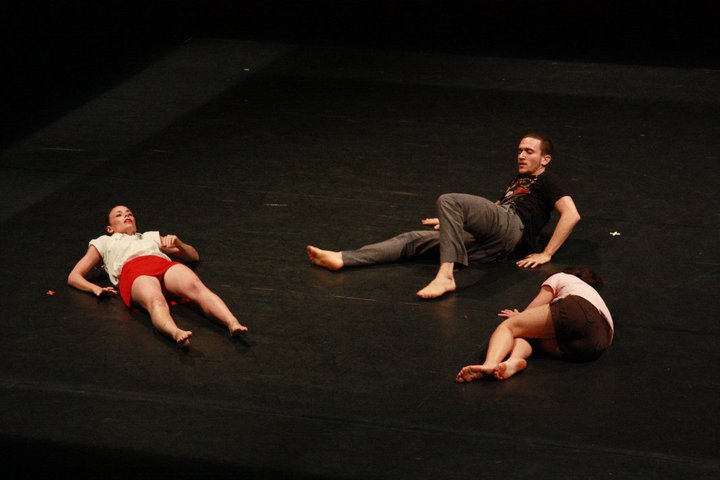Complaint Spirals in the Studio and at Home by Ori Lenkinski

originally published in Hebrew in Haaretz
Over a decade ago, while working on a creation by Rachel Erdos for the Curtain Up Festival, my fellow dancer and very wise friend Gil said, ‘you can always tell when a dancer is looking for problems instead of solutions.’
Rehearsal after rehearsal, one of our fellow dancers would pause after each run to give a run-down of all the parts of the work that felt wrong, uncomfortable or awkward, to us and the choreographer. It didn’t matter how many times the choreographer tweaked the order or changed the movement sequences, this dancer felt off about the work.
Over the years, I have seen this situation countless times. I have even been the star of these scenes myself. Sometimes, it doesn’t matter how great a work is, due to a collision of personal circumstances, being in the studio takes on a sour taste. In fact, American choreographer Paul Taylor was once quoted saying, ‘how do you get a dancer to complain? You give them a job.’
The studio can be fertile ground for complaining, particularly for complaint vortexes.
When I tailspin into one of these, it’s usually because I am hungry or because I feel the project isn’t going in the direction I agree with and so, like a dog hunkering back on its leash, I find ways of stalling the proceedings with my discontent.
As the parent of a school-aged child, I am now being served back my fair share of complaint spirals. These little snails get flayed around usually surrounding two issues; food and clothing. They usually show up when there’s some kind of pressure to be on time, after all, school starts at eight AM no exceptions. They can begin as a small thing and turn into monsters or they can start as full steam tantrums.
For example, I prepare a meal, I serve that meal and my daughter looks at the plate and says, “I don’t want to eat that.” The meal could be something she loves, something she asked for the day prior but it doesn’t matter. The following scene usually plays out.
She: “I want to eat!”
Me: “What do you want?”
She: “I want to eat!”
Me: “So eat what I made you.”
She: “No. I don’t want that.”
Me: “Then what do you want?”
She: “I don’t know…. I want to eat!”
And so on and so forth.
The clothing one goes along the same route. These situations can get very heated. They can end in tears, shouting, a complete delay of our routine.
Most often, as in the studio, the problem isn’t the food or the clothing. There is some underlying dissatisfaction or request for attention that motivates the conflict. And usually, the thing that brings about the release from this tangle is completely unrelated. In those moments, attempting to touch on the actual problem is useless. If I ask my daughter if she’s upset or frustrated about something as she refuses her toad-in-the-hole (beiza baken) she will say no. Her loop of discontent feeds itself and wants to continue. It willfully gallops towards conflict.
In those moments, when my child is looking for problems and refusing all solutions, we are at a dead end. It is in these moments that I secretly wish for an adult to come in and solve our problem for us. Someone with authority, someone with a firm hand, my parents perhaps. And then I realize that I am that adult. That there is a way through and I have to find it otherwise we will spend our whole day rinsing and repeating the above text.
As a parent, and as a choreographer, these are some of the hardest moments. They are situations that require creativity, calm, patience and endurance. It is not easy to prize someone free of a complaint spiral, sometimes it’s nearly impossible. But, for me and my child, being able to identify that we are in one is somehow useful. And knowing that there is an end to it, that it will eventually resolve, provides the encouragement I, at least, need to get through.
